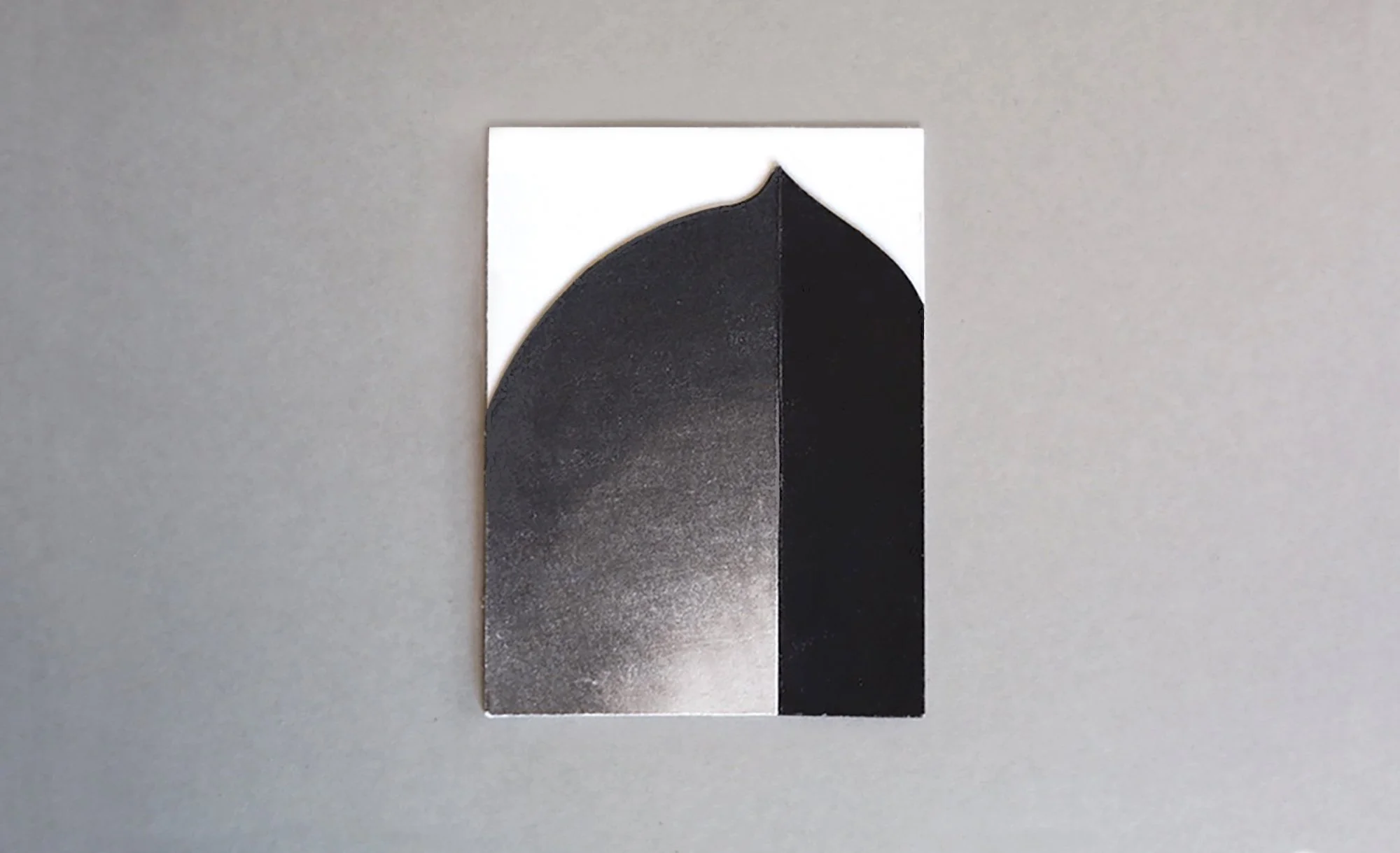Care as Infrastructure
Support Structure (2025) – Ink on cut paper 3×4 in.
Care is not a feeling. It is weight. It is a system that holds bodies, time, and work in place. It is the first structure most of us know, and the one most easily overlooked. When it fails, other structures reveal themselves as temporary, fragile, insufficient.
In my day, care is repetitive construction. Feeding, lifting, returning, rocking. These are not interruptions to work. They are the frame that everything else fits into. Structure is not always rigid. It can be flexible and exact, able to respond without collapsing. It holds by adjusting, not by resisting.
In the studio this logic becomes visible. A curved form leans into another. A seam carries the load between two shapes. A dark field presses outward and meets a softer interior. Each composition is a small architecture where dependency is designed rather than hidden. Edges are not borders. They are points of transfer where pressure moves from one body to another.
Ink makes these questions material. It pools, spreads, and settles according to what holds it. A gradient reads as weight distributed through time. A dense black reads as accumulation. A cut reads as a joint, two parts allowed to stay whole by sharing strain. The paper records what can be held and where it begins to falter. I work until the balance feels honest. Not ideal. Sustained.
Outside the studio, support is not always present. Policy and institutional frameworks promise to hold, then withdraw. When that happens, the body becomes the missing infrastructure. The labor of care stretches to fill the gap. As Silvia Federici writes, this labor is assumed to exist, endlessly renewable, outside the economy yet holding it up. This is not abstract. It is time, energy, and attention diverted to keep the day intact. A dark band meeting a lighter one is more than composition. It is the record of something that should have been there and was not.
I do not depict systems. I test them. Each work asks how much contact is needed for two forms to share weight. How much distance still allows relation. What kind of edge can hold connection without erasure. These are formal problems and social ones. A seam too tight becomes a choke point. Too loose and it fails to join. Either way, the failure is visible on the surface.
Care also requires maintenance. Structures do not hold themselves. In the studio this means clean edges, even blacks, transitions that do not fray unless fray is the subject. In life it means repair, planning, and the quiet labor that keeps other labors possible. Repetition is not a lack of invention. It is the way support becomes reliable.
Care is not the opposite of structure. It is what makes structure real. What appears small is load bearing. What appears soft is exact. These works do not illustrate that truth; they are built by it.
Our systems were not designed with care at their foundation. This work asks what it would mean if they were.

